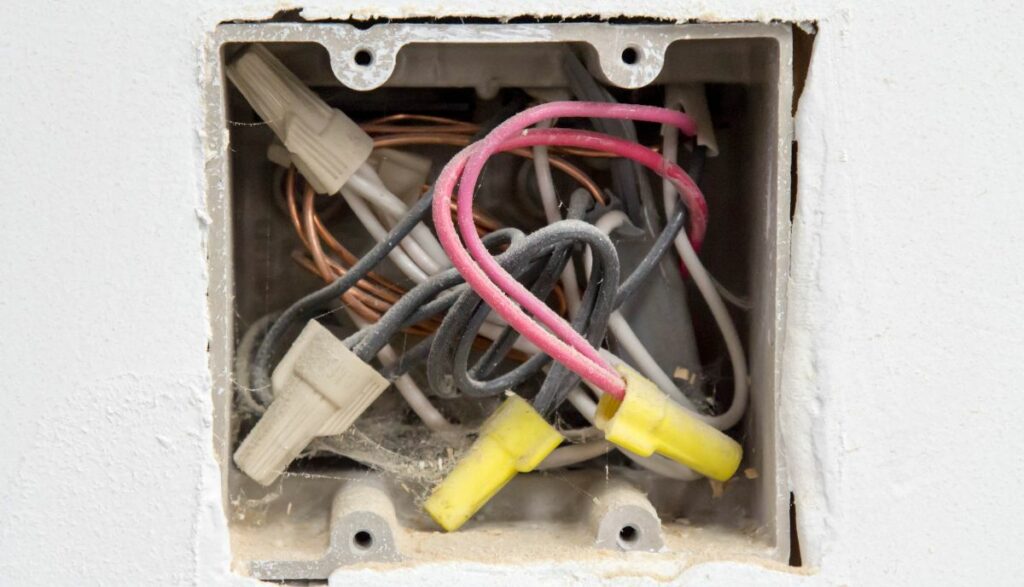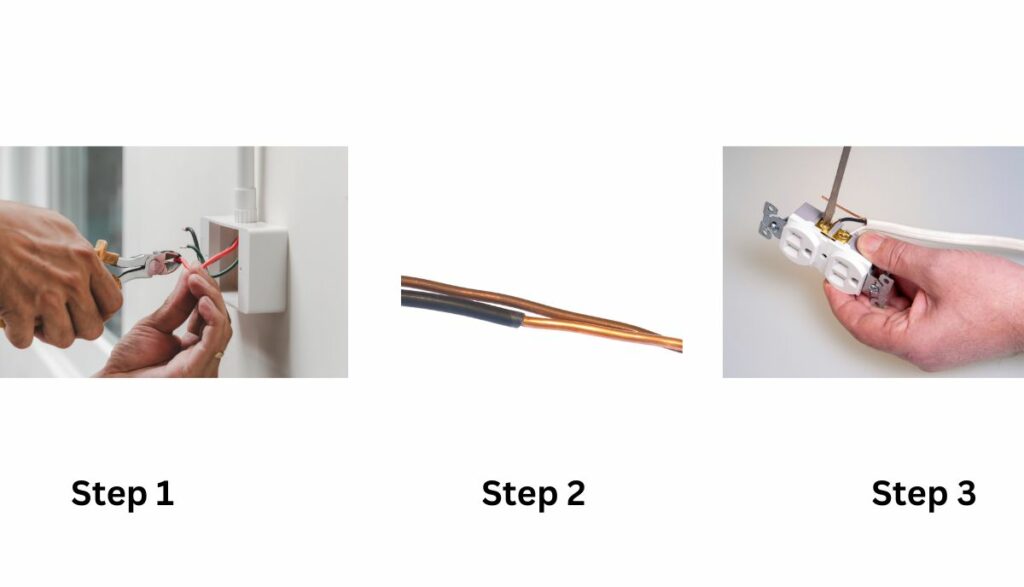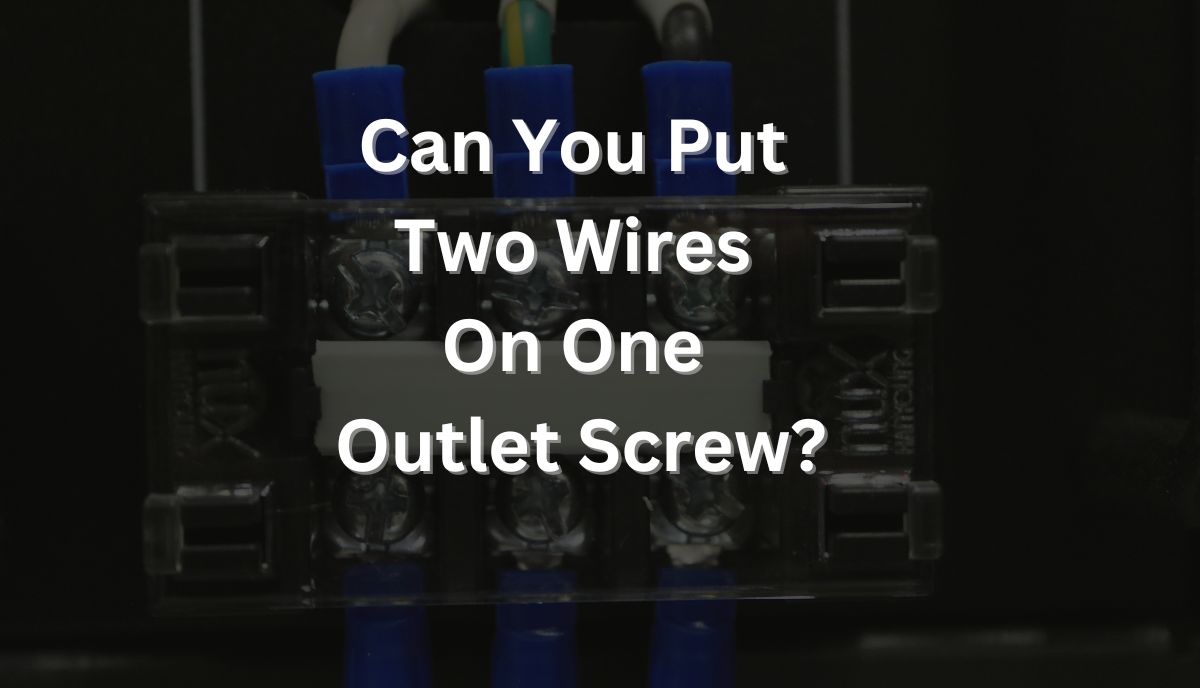If you live in an older house, a thorough inspection may reveal two or more wires under the same outlet screw terminal. This practice persists because of the convenience. Lazy contractors won’t hesitate to loop two wires around the same screw because the alternative requires more time and effort. But can you put two wires on one outlet screw?
You can put two wires on one outlet screw but it is not safe. An oversized load will cause the wires to heat and cool rapidly, leading to frequent expansion and contraction and ultimately loosening the screw. However, even without the constant expansion and contraction, you can’t trust two wires to form a secure connection around the same screw. Loose connections are dangerous because they cause arcing. Arcing can melt wires and start fires.
Some laypeople resort to this practice because the box is too small to accommodate the wire nuts and pigtails they want to use. In fact, depending on where you live, your local code may limit the number of electrical wires the box can hold.
You’re better off talking to an expert. Let them identify the best way to wire your outlet despite the limited number of screws at your disposal.
What Is The Proper Way To Attach Multiple Wires To One Outlet Screw?
You make pigtails. It consists of a short wire. One end runs to a screw terminal. The other end links to one or more wires bound by a wire nut.

Pigtails achieve the following objectives:
- You can extend the length of a short wire.
- You can ground the receptacle by making a connection between the circuit ground wires, the metal box, and the device.
- You can connect hot and neutral wires. This allows the current to keep flowing even when the device malfunctions. If you link each wire to a screw, a malfunction in the device prevents the power from flowing to other devices downstream.
- Contractors apply pigtails while connecting a switch to two or more light fixtures.
As you can see, pigtails have multiple applications. If you’re tempted to use this concept in your setup, follow these steps:
- De-energize the circuit. Don’t perform electrical work without killing the power. Use the breaker controlling the circuit associated with the device you want to wire. You can also disconnect the power at the main breaker. However, the second option shuts the power to the entire house off, which is inconvenient.
- Use a tester. Make sure the wires are safe for you to handle. But even if the tester provides the correct result, that isn’t an excuse to proceed without protective equipment. Wear rubber gloves in case things go wrong.
- Cut a 6 to 8 – inch wire. The pigtail wire should be the same color as the wires from your device.
- Remove ¾ inches of the insulation from each end.
- Wrap one end of the pigtail around the device or outlet’s screw. Turn the screw until the wire is secure. Don’t allow the copper conductor to remain exposed.
- Connect the other end of the pigtail to the circuit wires. I recommend twisting the wires clockwise. This allows you to create a secure connection when you reach the next step. Use needle-nose pliers.
- Connect the twisted wires to a wire nut or any connector that appeals to you. Again, don’t leave exposed copper wires. Many contractors clip off the ends after twisting the wires together. This allows the wire nut to cover everything. You should also turn the wire nut clockwise.
- Give the wires a gentle tug. Do they feel secure in the wire nut?
- If you have a metal box, you will see two grounding pigtails. One pigtail connects to the metal box. The other pigtail runs to the device. A wire connector links the free ends of the pigtails to the grounding wires. The Spruce has included a video that shows consumers how to perform pigtail connections.
You can make as many pigtails as you want. Therefore, there’s no excuse for connecting multiple wires to the same screw.
Are There Electrical Code Regulations Regarding Connecting Multiple Wires To An Outlet Screw?
This guide from the National Fire Protection Association (NFPA) has highlighted Section 110.3(B) of the NEC, which compels contractors to follow the manufacturer’s instructions when installing products.
Most manufacturers will tell you to attach one wire to each screw on their receptacles. You may attract hefty penalties by ignoring those instructions. Additionally, your local code will most likely prohibit this practice.
The local code takes precedence over the NEC. They have the final say. This is why it is safer for laypeople to hire professionals. A licensed electrician knows the rules and regulations that govern their community. They also know the National Electrical Code. You can trust them to wire your outlets without breaking the law.
How Can I Ensure A Secure And Safe Connection For Two Wires On One Outlet Screw?
Most people use the following steps to loop one wire around an outlet screw:

- Remove ¾ inches of insulation from one end of the wire. Don’t squeeze the stripper too tightly. You should also inspect the bare conductors for damage afterward.
- Make a loop out of the stripped end of the wire. It should look like a question mark.
- Twist the loop around the screw in a clockwise direction.
- Use pliers to squeeze the wire around the screw.
- Tighten the screw.
If you’ve decided to loop a second wire around the terminal, this procedure won’t change. You may require additional effort to tighten the screw around both wires. But this cannot guarantee a secure connection unless the screw is designed to accommodate multiple wires.
Additionally, inspectors in a commercial setting may penalize you if they discover this configuration unless your local code permits the practice of attaching multiple wires to the same screw.

